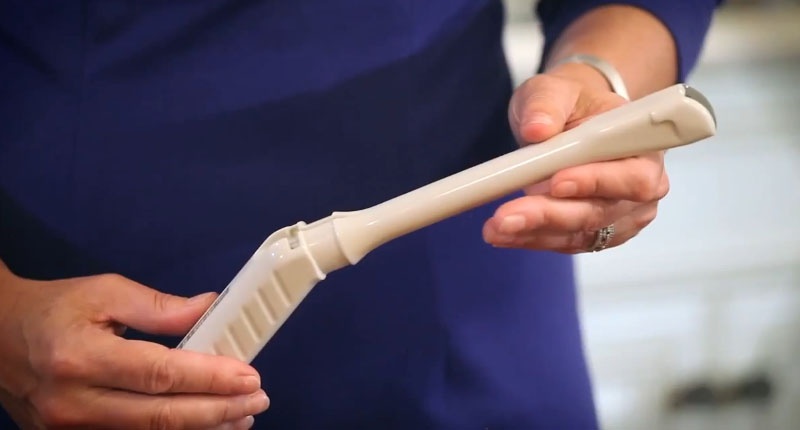Cancer is of the most common terminal diseases today that destroys the human body from within. Almost everyone alive today has that one tragic story related to cancer. It often costs people their lives but early detection can help prevent some of the destructive effects. It is a disease that can affect any organ or organ system in the body, easily spreading from one part of the body to another. Some types of cancer are more common than others, but malignancy is a common feature.
The cancer of the lung is one of the most common types that plague human beings in general, whereas cervical and ovarian cancers affect women only. Of all these, ovarian cancer originates deep within the lower abdomen and often goes undetected until it is too late. If you are wondering how to detect ovarian cancer, the test commonly known as a transvaginal ultrasound may be the one that you should look out for.
Only a transvaginal ultrasound and a CA-125 blood test can help detect ovarian cancer in its early stage. If you are wondering can an ultrasound detect ovarian cancer, it might actually be your best shot. What follows is a detailed analysis of the test. Women from 30 to 50 years of age with a hereditary history of ovarian cancer need to get medical check ups on a biannual basis, and a transvaginal ultrasound should be a necessary part of the regimen.
Can Ovarian Cancer be Detected Early Transvaginal Ultrasound
What is a transvaginal ultrasound test?
An ultrasound test is one where high frequency sound waves are emitted from the ultrasound scanner that has a microphone attached to it. These high frequency sound waves pass through the empty space and bounce off the organ walls and can be picked up by the microphone. This is how an image of your inner body can be obtained with the help of an ultrasound as the scanner is linked to a computer. The nature of cancer cells is such that the image created is one that helps identify any abnormalities. A transvaginal ultrasound will require you to insert a medical probe into your lower vagina, as opposed to a general abdominal ultrasound. This can help detect the presence of cancer cells within your body.
If you are over 30 years old with a history of cancer in the family, you must already be getting annual check ups every year to make sure everything is running properly. If you are wondering how to detect ovarian cancer ultrasound, you must necessarily include a transvaginal ultrasound in these checks. This will be a mere extension of the normal pelvic examination that you go through, extending the process by about 15 minutes at the most. A normal pelvic examination cannot help in the detection of early stage ovarian cancer, but a transvaginal ultrasound can. The Society of Gynecologic Oncologists in February 2000, declared that the test can also detect advanced stage of ovarian cancer.
We can therefore conclude that getting a transvaginal ultrasound done on a regular basis can detect the presence of cancer cells or tumors in the ovaries, womb, fallopian tube, uterus or other surrounding regions. However, it cannot detect whether or not the growth is malignant. Once the presence is detected, you must opt for a biopsy to know the exact nature of things.
Read More: Ovarian Cysts: Symptoms, Types, Risk, Treatment and Prevention
Transvaginal Ultrasound Process
The process involved in taking a transvaginal ultrasound may seem daunting, but in reality it is a mere extension of any normal pelvic examination that you have undergone in the past.
It is remarkably similar to a general abdominal ultrasound where a sonographer supervises the test. The equipment is similar as well with the scanner attached to a computer that analyses the sound waves and shows images of the inner organs in your body. While an abdominal ultrasound is carried out externally, a transvaginal ultrasound involvs a probe to me inserted in your lower vagina that can help detect the presence of cancer cells at any stage or development. This insertion might make things uncomfortable for you, but the process itself is a painless one. If it make you more comfortable, you can also request for a female sonographer or doctor for the test.
While an abdominal ultrasound requires you to take the test on a full bladder, the preparation is slightly different for a transvaginal ultrasound. In case of the latter, you must necessarily empty your bladder right before the test is done. This makes sure that the picture is clear from the inside and does not interfere with representing the real thing in the image obtained from the test.
Read More: PCOS in Women: 5 Treatment Options You Need to Know
Does the test hurt?
The test will only extend a normal pelvic examination by 15 minutes. The test is painless but the insertion of the medical probe containing the scanner for the transvaginal ultrasound test may cause some discomfort. However, if you experience any pain during the test, inform your sonographer immediately.
Expenses
Getting a transvaginal ultrasound done from a standard place in India will generally cost you Rs. 700 to Rs. 1200. It is best to be safe than sorry and get the tests done regularly to to detect ovarian cancer ultrasound.
Conclusion
While getting a transvaginal ultrasound done every time you have a full medical examination may seem redundant, it is best to be careful about cancer than reckless with tests. Moreover, it can detect ovarian cancer where the lump cannot be felt physically until it is too late. Multiple forays in medical research have suggested that it can detect both early and advanced stages of cancer in women. This makes it extremely important for women to take the test regularly.
References
https://www.cancerresearchuk.org/about-cancer/womb-cancer/getting-diagnosed/tests-diagnose/transvaginal-ultrasound-scan
https://news.cancerconnect.com/ovarian-cancer/transvaginal-ultrasound-detects-ovarian-cancer-and-may-improve-the-for-cure-ep9RpT1DYUyBB6Qv2KwvKQ/













